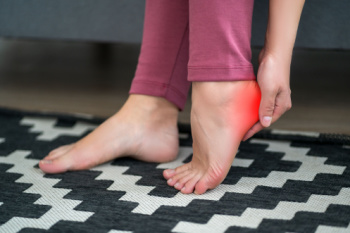Two Types of Heel Spurs

Heel spurs, bony protrusions that form on the underside of the heel bone, are a common source of heel pain for many individuals. There are two primary types of heel spurs, which are known as posterior and inferior. Posterior heel spurs develop at the back of the heel where the Achilles tendon attaches to the bone. They often result from chronic strain or inflammation of the Achilles tendon, commonly seen in athletes or individuals with tight calf muscles. Conversely, inferior heel spurs form underneath the heel, typically near the plantar fascia ligament's attachment point. This type of spur is frequently associated with plantar fasciitis, a condition characterized by inflammation of the plantar fascia due to excessive stress or strain. Both types of heel spurs can cause significant discomfort and may require intervention to alleviate pain and restore mobility. Understanding the differences between these two types can aid in accurate diagnosis and tailored treatment approaches for individuals experiencing heel pain. If you have heel pain, it is strongly suggested that you consult a podiatrist who can diagnose a heel spur, determine what type it is, and offer correct relief and treatment methods.
Heel spurs can be incredibly painful and sometimes may make you unable to participate in physical activities. To get medical care for your heel spurs, contact the podiatrists from Boston Common Podiatry. Our doctors will do everything possible to treat your condition.
Heels Spurs
Heel spurs are formed by calcium deposits on the back of the foot where the heel is. This can also be caused by small fragments of bone breaking off one section of the foot, attaching onto the back of the foot. Heel spurs can also be bone growth on the back of the foot and may grow in the direction of the arch of the foot.
Older individuals usually suffer from heel spurs and pain sometimes intensifies with age. One of the main condition's spurs are related to is plantar fasciitis.
Pain
The pain associated with spurs is often because of weight placed on the feet. When someone is walking, their entire weight is concentrated on the feet. Bone spurs then have the tendency to affect other bones and tissues around the foot. As the pain continues, the feet will become tender and sensitive over time.
Treatments
There are many ways to treat heel spurs. If one is suffering from heel spurs in conjunction with pain, there are several methods for healing. Medication, surgery, and herbal care are some options.
If you have any questions, please feel free to contact our office located in Boston, MA . We offer the newest diagnostic and treatment technologies for all your foot care needs.





